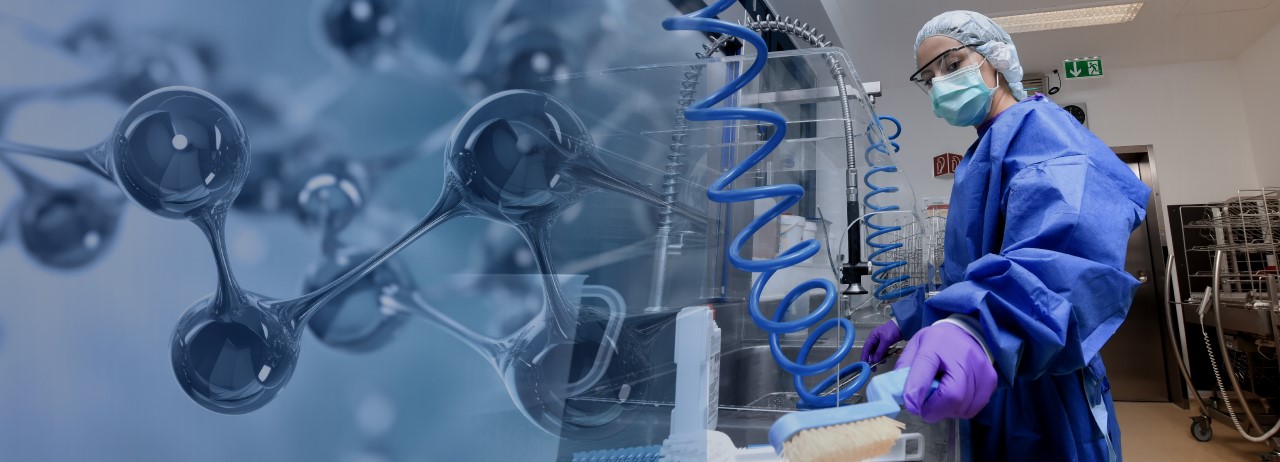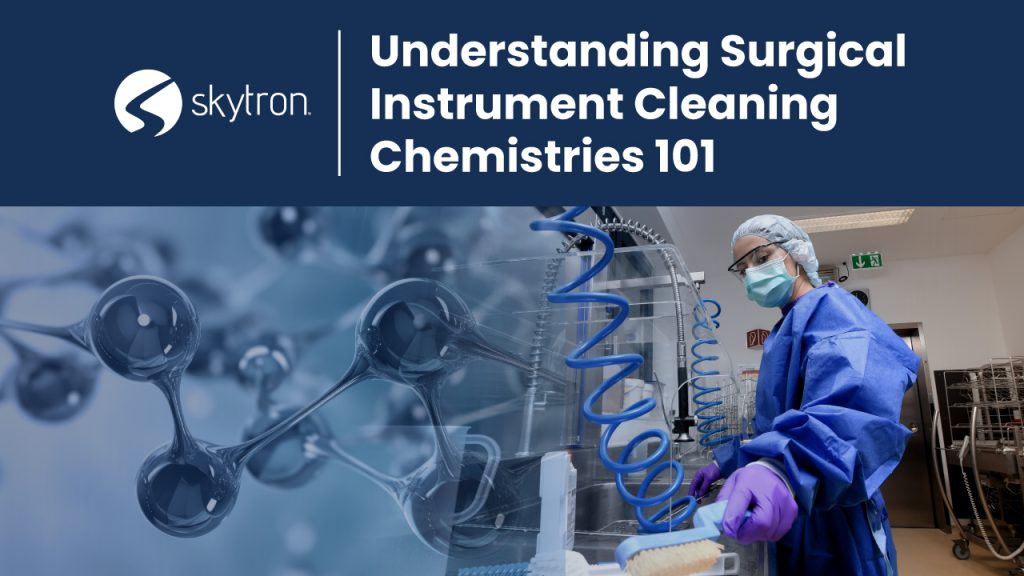
-
Written ByRebecca Kinney
-
PublishedJanuary 22, 2024
Covering the chemicals primarily used in your department and the pH scale among the various cleaning chemistries employed.
Understanding Surgical Instrument Cleaning Chemistries 101
Proper cleaning of surgical instruments/devices is vital to ensuring patient safety, longevity of instrumentation, and so much more. It all starts with the reprocessing equipment in your sterile processing department (SPD), the chemicals used throughout the decontamination process, and having a level of awareness regarding the chemistries used. In this edition of our newsletter, we will cover the chemicals primarily used in your department and the pH scale among the various cleaning chemistries employed. We will also walk you through the types of surgical instrument cleaning chemistries, focusing on enzymatic, neutral, alkaline, and specialty chemistries.

pH Scale and its Importance:
Before delving into the specifics of cleaning chemistries, it is essential to understand the pH scale. The pH scale measures the acidity or alkalinity of a solution on a scale from 0 to 14. A pH of 7 is considered neutral, while values below 7 indicate acidity and those above 7 indicate alkalinity. In the context of surgical instrument cleaning, the pH of the cleaning chemistry plays a crucial role in achieving optimal results without compromising the integrity of the instruments.
Enzymatic Detergents:
Enzymatic detergents are a staple in surgical instrument cleaning. They are characterized by a neutral pH, typically hovering around 7. This neutrality ensures compatibility with a wide range of materials, preventing corrosion or damage to delicate surgical instruments. Enzymatic detergents contain specialized enzymes that break down and remove organic debris, such as blood, tissue, and other bodily fluids, from the instruments. This enzymatic action enhances the cleaning efficacy, making these detergents highly effective in preparing instruments for sterilization.
Neutral Detergents:
Like enzymatic detergents, they also maintain a neutral pH, ensuring they are gentle on instruments. With a pH of around 7, neutral detergents are suitable for a broad spectrum of materials. They excel in removing general contaminants like dirt and oils from surgical instruments. The neutral pH is particularly advantageous when dealing with sensitive instruments or those with intricate designs, as it minimizes the risk of corrosion or damage during the cleaning process.
Alkaline Chemistries:In contrast to enzymatic and neutral detergents, alkaline chemistries are characterized by a higher pH, typically around 11. The increased alkalinity enhances the cleaning power, making these detergents effective against stubborn contaminants, including mineral deposits and inorganic soils. Alkaline detergents are commonly used in cleaning processes that require more aggressive action, such as removing calcified deposits on surgical instruments. However, caution must be exercised when using alkaline chemistries on certain materials, as the higher pH can potentially lead to corrosion or damage over prolonged exposure.
Specialty Chemistries:
Beyond the three primary categories, specialty chemistries are designed for specific cleaning challenges. One notable example is de-scalers, which target and remove scale deposits that can accumulate on instruments over time. These scale deposits, often composed of minerals, can compromise the functionality of surgical instruments if not addressed promptly. De-scalers typically fall within the alkaline category but are formulated with a focus on scale removal, showcasing the adaptability of cleaning chemistries to specific needs.
Instrument Staining
It is of note that when it comes to the chemicals you use, following manufacturer IFUs is always the best practice; typically, that goes without saying. However, adding more solutions than IFUs call for to minimize smells or seemingly help remove debris more efficiently can be tempting, but this can usually do more harm than good.
Here are a few colors of instrumentation staining and what they could mean.
- Brown/Orange: High PH
- Dark Brown: Low PH
- Bluish/Black: Reverse plating due to mixed metals during the cleaning process
- Multicolor: Excessive heat
- Light/Dark Spots: Water droplets drying on the surface
- Black: Contact with ammonia
- Gray: Excessive use of rust remover solution
- Rust: Dried on blood or bioburden
As you navigate the best solutions for your facility, we hope this 101 information helps you remain mindful in your reprocessing efforts.
To learn more about our new and improved Cleaning and Disinfection Solutions, visit here.






